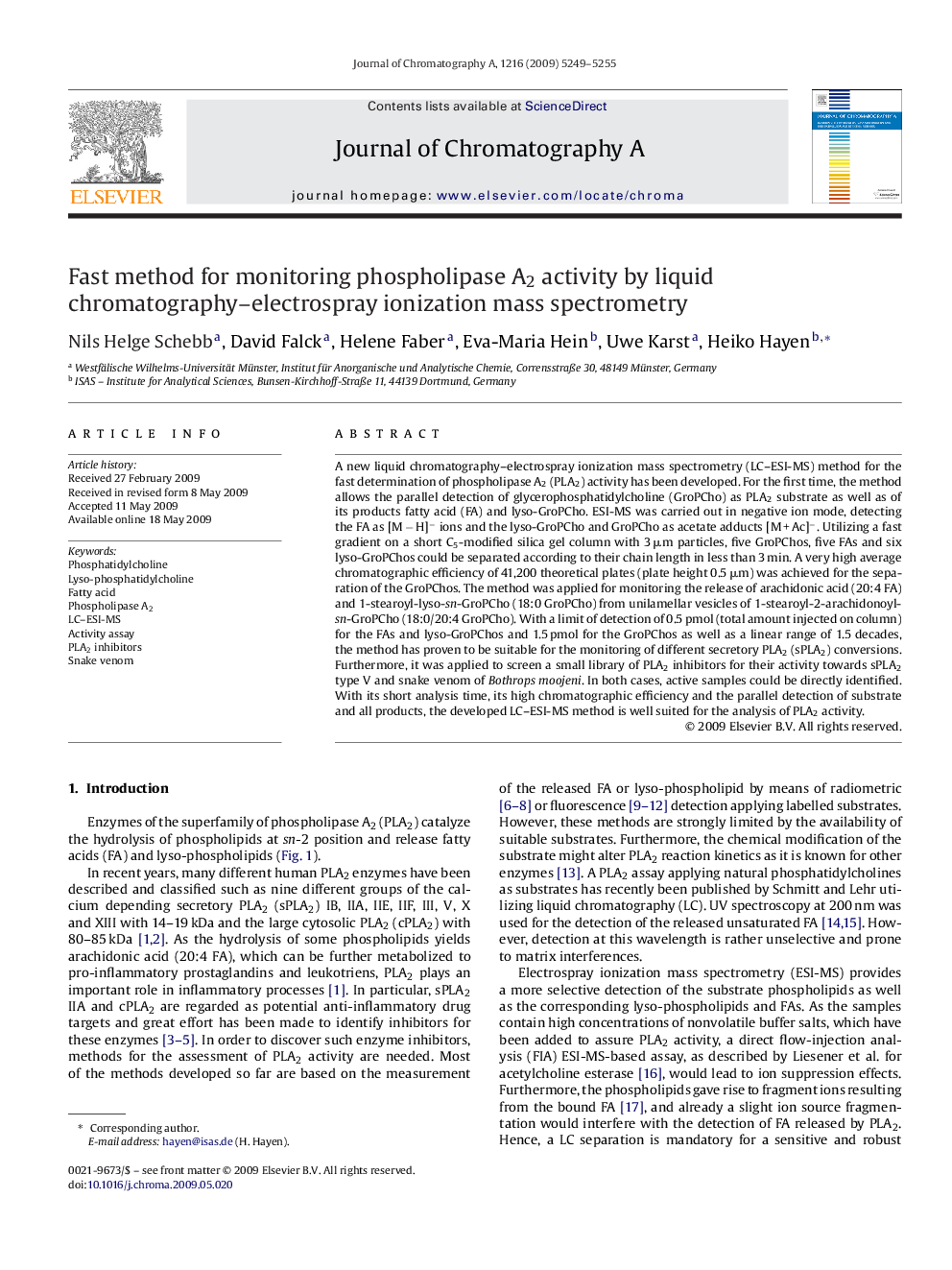| Article ID | Journal | Published Year | Pages | File Type |
|---|---|---|---|---|
| 1206152 | Journal of Chromatography A | 2009 | 7 Pages |
A new liquid chromatography–electrospray ionization mass spectrometry (LC–ESI-MS) method for the fast determination of phospholipase A2 (PLA2) activity has been developed. For the first time, the method allows the parallel detection of glycerophosphatidylcholine (GroPCho) as PLA2 substrate as well as of its products fatty acid (FA) and lyso-GroPCho. ESI-MS was carried out in negative ion mode, detecting the FA as [M − H]− ions and the lyso-GroPCho and GroPCho as acetate adducts [M + Ac]−. Utilizing a fast gradient on a short C5-modified silica gel column with 3 μm particles, five GroPChos, five FAs and six lyso-GroPChos could be separated according to their chain length in less than 3 min. A very high average chromatographic efficiency of 41,200 theoretical plates (plate height 0.5 μm) was achieved for the separation of the GroPChos. The method was applied for monitoring the release of arachidonic acid (20:4 FA) and 1-stearoyl-lyso-sn-GroPCho (18:0 GroPCho) from unilamellar vesicles of 1-stearoyl-2-arachidonoyl-sn-GroPCho (18:0/20:4 GroPCho). With a limit of detection of 0.5 pmol (total amount injected on column) for the FAs and lyso-GroPChos and 1.5 pmol for the GroPChos as well as a linear range of 1.5 decades, the method has proven to be suitable for the monitoring of different secretory PLA2 (sPLA2) conversions. Furthermore, it was applied to screen a small library of PLA2 inhibitors for their activity towards sPLA2 type V and snake venom of Bothrops moojeni. In both cases, active samples could be directly identified. With its short analysis time, its high chromatographic efficiency and the parallel detection of substrate and all products, the developed LC–ESI-MS method is well suited for the analysis of PLA2 activity.
